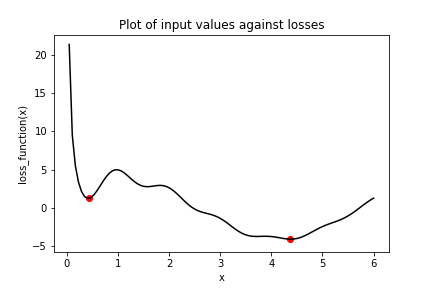Avoiding local minima
The previous problem showed how easy it is to get stuck in local minima. We had a simple optimization problem in one variable and gradient descent still failed to deliver the global minimum when we had to travel through local minima first. One way to avoid this problem is to use momentum, which allows the optimizer to break through local minima. We will again use the loss function from the previous problem, which has been defined and is available for you as loss_function().

Several optimizers in tensorflow have a momentum parameter, including SGD and RMSprop. You will make use of RMSprop in this exercise. Note that x_1 and x_2 have been initialized to the same value this time. Furthermore, keras.optimizers.RMSprop() has also been imported for you from tensorflow.
Cet exercice fait partie du cours
Introduction to TensorFlow in Python
Instructions
- Set the
opt_1operation to use a learning rate of 0.01 and a momentum of 0.99. - Set
opt_2to use the root mean square propagation (RMS) optimizer with a learning rate of 0.01 and a momentum of 0.00. - Define the minimization operation for
opt_2. - Print
x_1andx_2asnumpyarrays.
Exercice interactif pratique
Essayez cet exercice en complétant cet exemple de code.
# Initialize x_1 and x_2
x_1 = Variable(0.05,float32)
x_2 = Variable(0.05,float32)
# Define the optimization operation for opt_1 and opt_2
opt_1 = keras.optimizers.RMSprop(learning_rate=____, momentum=____)
opt_2 = ____
for j in range(100):
opt_1.minimize(lambda: loss_function(x_1), var_list=[x_1])
# Define the minimization operation for opt_2
____
# Print x_1 and x_2 as numpy arrays
print(____, ____)